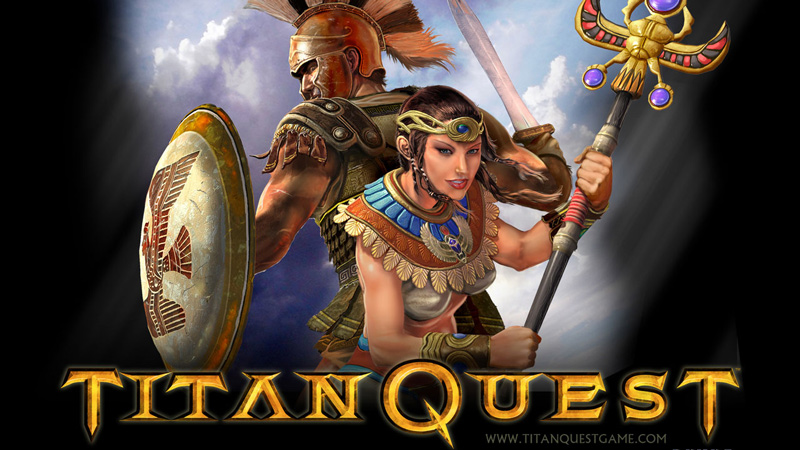 This article aims to help you by showing how to remove the Trojan:HTML/Brocoiner which is a JavaScript Monerominer that uses the Coinhive platform to utilize your System’s resources in order to mine for the cryptocurrency Monero.
This article aims to help you by showing how to remove the Trojan:HTML/Brocoiner which is a JavaScript Monerominer that uses the Coinhive platform to utilize your System’s resources in order to mine for the cryptocurrency Monero.
A new cryptocurrency mining malware has been detected and reported on Steam forums, called Brocoiner. This is malware written in JavaScript which is often published on suspicious sites and simply by visiting those, your computer silently begins to mine for Bitcoin via the Coinhive mining service. This may immediately result in your computer slowing down significantly in performance while the cyber-criminals make profits off your system’s resources.

Threat Summary
| Name | Brocoiner |
| Type | JavaScript Monero Miner Malware |
| Short Description | Miner malware on JavaScript which aims to mine for the cryptocurrency Monero by using your CPU power. |
| Symptoms | Elevated usage of your CPU. Suspicious process running in Windows Task Manager. |
| Distribution Method | Via malicious spam e-mails, and fake websites of online video games. |
| Detection Tool |
See If Your System Has Been Affected by malware
Download
Malware Removal Tool
|
User Experience | Join Our Forum to Discuss Brocoiner. |

Brocoiner Miner – Distribution
In order to infect victims this BitCoin miner uses fake websites of video games, like the old website of the game Titan Quest (image shown below).
The way it works is that in this situation in particular, the cyber-criminals behind the Brocoiner miner have used the old website of the game to mask it as the legitimate game site and make users play it online. But what users do not know is that the web pages they visit contain JavaScript code which activates the Brocoiner Trojan on their computer and it begins using over 100% of their CPU power in order to mine for the cryptocurrency Monero. The same goes for other types of websites, the cyber-criminals may have compromised, such as:
- Adult sites.
- Sites that are for online streaming of movies.
- Other types of online content.

Brocoiner Trojan – More Information
The Brocoiner Trojan is the type of threat you do not want to mess with. Once it infects your computer, the virus may run a process as an administrator that directly begins to use your CPU’s hashing power in order to mine for BitCoins. The mining process occurs in a very particular way – it begins to connect you to a Coinhive mining pool, very similar to other Coinhive Monero mining malware. From there, the virus may run a malicious process in the background of your computer, which is hidden, meaning that it bypasses your Antivirus protection. The malicious file begins the hashing operation which may take up to 100% usage of your CPU and GPU (Video Card and Central Processor). This results in your computer becoming overheated and if the virus stays for longer periods of time, it may even freeze your PC, break your PC by overheating it and many other negative consequences.
The malicious JavaScript, containing Brocoiner Monero miner may also generate profit to the cyber-criminals in several other ways at your expense, since it is a Trojan after all. The list of malicious activities which may be performed are similar to any other Trojan Horse:
- Steal your passwords.
- Obtain your financial credentials.
- Steal your system information.
- Research which are the unsecured ports on your computer.
- Infect you with other malware.
In addition to this, once this virus knows your computer’s vulnerabilities it can use them in order to:
- Install other miner trojans.
- Update itself to remain undetected for longer periods of time.
- Collect the keystrokes you type.
- Collect information, like your IP address, network data, antivirus info and other.

Remove Brocoiner Miner from Your Computer
In order to remove this cryptocurrency miner completely from your computer system and keep it from reappearing again, you will need to have some experience in malware removal. This is why we recommend you to follow the automatic rather than the manual removal instructions below whose primary purpose is to help you get rid of the Brocoiner miner completely from your computer system and help you with protecting your computer against future infections by scanning your computer automatically with an advanced anti-malware software and removing all traces of Brocoiner miner from it.
Preparation before removing Brocoiner.
Before starting the actual removal process, we recommend that you do the following preparation steps.
- Make sure you have these instructions always open and in front of your eyes.
- Do a backup of all of your files, even if they could be damaged. You should back up your data with a cloud backup solution and insure your files against any type of loss, even from the most severe threats.
- Be patient as this could take a while.
- Scan for Malware
- Fix Registries
- Remove Virus Files
Step 1: Scan for Brocoiner with SpyHunter Anti-Malware Tool



Step 2: Clean any registries, created by Brocoiner on your computer.
The usually targeted registries of Windows machines are the following:
- HKEY_LOCAL_MACHINE\Software\Microsoft\Windows\CurrentVersion\Run
- HKEY_CURRENT_USER\Software\Microsoft\Windows\CurrentVersion\Run
- HKEY_LOCAL_MACHINE\Software\Microsoft\Windows\CurrentVersion\RunOnce
- HKEY_CURRENT_USER\Software\Microsoft\Windows\CurrentVersion\RunOnce
You can access them by opening the Windows registry editor and deleting any values, created by Brocoiner there. This can happen by following the steps underneath:


 Tip: To find a virus-created value, you can right-click on it and click "Modify" to see which file it is set to run. If this is the virus file location, remove the value.
Tip: To find a virus-created value, you can right-click on it and click "Modify" to see which file it is set to run. If this is the virus file location, remove the value.Step 3: Find virus files created by Brocoiner on your PC.
1.For Windows 8, 8.1 and 10.
For Newer Windows Operating Systems
1: On your keyboard press + R and write explorer.exe in the Run text box and then click on the Ok button.

2: Click on your PC from the quick access bar. This is usually an icon with a monitor and its name is either “My Computer”, “My PC” or “This PC” or whatever you have named it.

3: Navigate to the search box in the top-right of your PC's screen and type “fileextension:” and after which type the file extension. If you are looking for malicious executables, an example may be "fileextension:exe". After doing that, leave a space and type the file name you believe the malware has created. Here is how it may appear if your file has been found:

N.B. We recommend to wait for the green loading bar in the navigation box to fill up in case the PC is looking for the file and hasn't found it yet.
2.For Windows XP, Vista, and 7.
For Older Windows Operating Systems
In older Windows OS's the conventional approach should be the effective one:
1: Click on the Start Menu icon (usually on your bottom-left) and then choose the Search preference.

2: After the search window appears, choose More Advanced Options from the search assistant box. Another way is by clicking on All Files and Folders.

3: After that type the name of the file you are looking for and click on the Search button. This might take some time after which results will appear. If you have found the malicious file, you may copy or open its location by right-clicking on it.
Now you should be able to discover any file on Windows as long as it is on your hard drive and is not concealed via special software.
Brocoiner FAQ
What Does Brocoiner Trojan Do?
The Brocoiner Trojan is a malicious computer program designed to disrupt, damage, or gain unauthorized access to a computer system. It can be used to steal sensitive data, gain control over a system, or launch other malicious activities.
Can Trojans Steal Passwords?
Yes, Trojans, like Brocoiner, can steal passwords. These malicious programs are designed to gain access to a user's computer, spy on victims and steal sensitive information such as banking details and passwords.
Can Brocoiner Trojan Hide Itself?
Yes, it can. A Trojan can use various techniques to mask itself, including rootkits, encryption, and obfuscation, to hide from security scanners and evade detection.
Can a Trojan be Removed by Factory Reset?
Yes, a Trojan can be removed by factory resetting your device. This is because it will restore the device to its original state, eliminating any malicious software that may have been installed. Bear in mind that there are more sophisticated Trojans that leave backdoors and reinfect even after a factory reset.
Can Brocoiner Trojan Infect WiFi?
Yes, it is possible for a Trojan to infect WiFi networks. When a user connects to the infected network, the Trojan can spread to other connected devices and can access sensitive information on the network.
Can Trojans Be Deleted?
Yes, Trojans can be deleted. This is typically done by running a powerful anti-virus or anti-malware program that is designed to detect and remove malicious files. In some cases, manual deletion of the Trojan may also be necessary.
Can Trojans Steal Files?
Yes, Trojans can steal files if they are installed on a computer. This is done by allowing the malware author or user to gain access to the computer and then steal the files stored on it.
Which Anti-Malware Can Remove Trojans?
Anti-malware programs such as SpyHunter are capable of scanning for and removing Trojans from your computer. It is important to keep your anti-malware up to date and regularly scan your system for any malicious software.
Can Trojans Infect USB?
Yes, Trojans can infect USB devices. USB Trojans typically spread through malicious files downloaded from the internet or shared via email, allowing the hacker to gain access to a user's confidential data.
About the Brocoiner Research
The content we publish on SensorsTechForum.com, this Brocoiner how-to removal guide included, is the outcome of extensive research, hard work and our team’s devotion to help you remove the specific trojan problem.
How did we conduct the research on Brocoiner?
Please note that our research is based on an independent investigation. We are in contact with independent security researchers, thanks to which we receive daily updates on the latest malware definitions, including the various types of trojans (backdoor, downloader, infostealer, ransom, etc.)
Furthermore, the research behind the Brocoiner threat is backed with VirusTotal.
To better understand the threat posed by trojans, please refer to the following articles which provide knowledgeable details.



